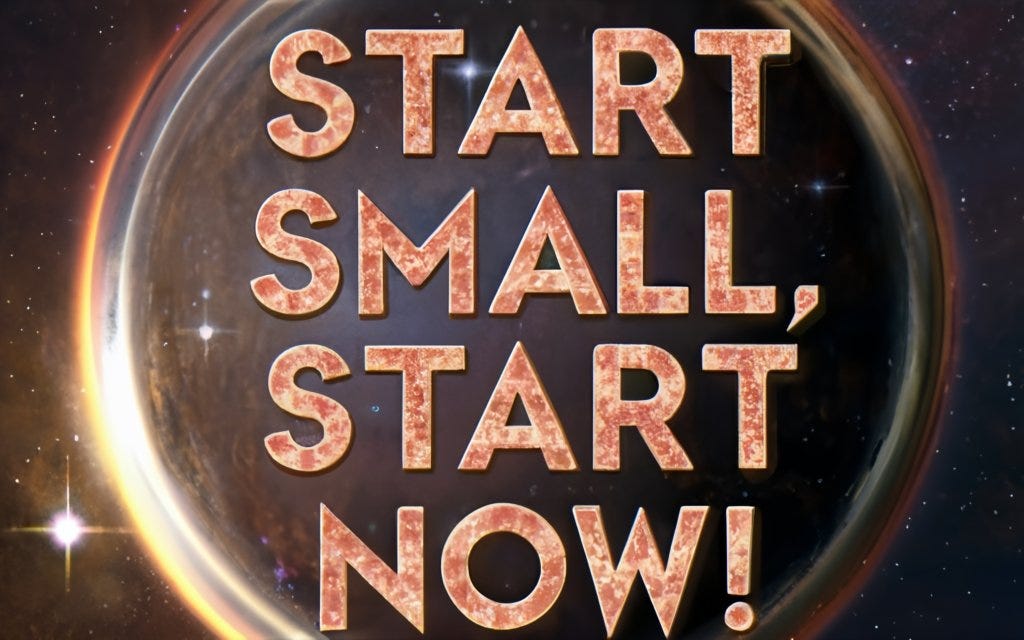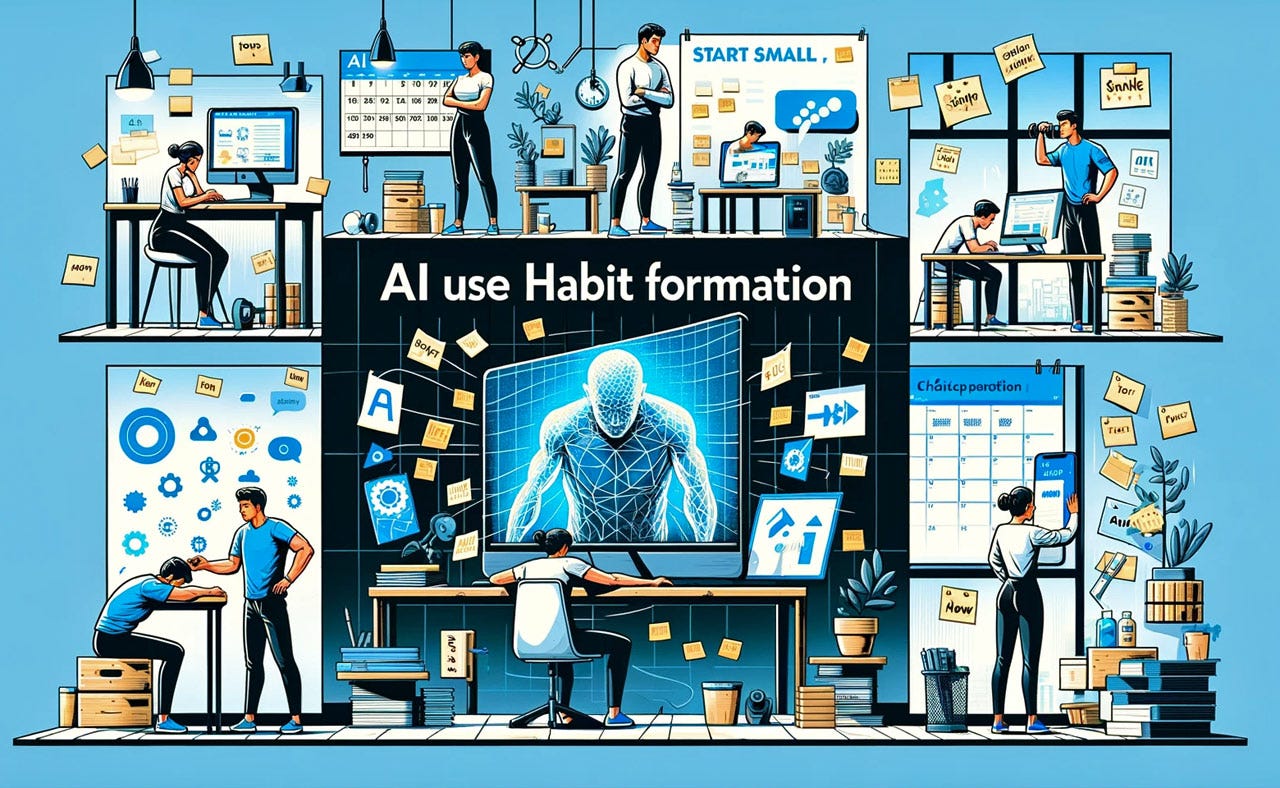Summary: Integrate AI into your UX workflow through effective habit formation: establish cues that trigger regular AI use to build your expertise. Start small, think big, and don’t get paralyzed by choice overload caused by the many possible uses of AI.
Forming an AI habit may be the second-most important advice for securing the future of your career in UX by becoming great at integrating AI into your UX workflow.
I am arrogant enough to think that the number-one most important piece of advice is my slogan, “Start Small, Start Now,” which emplores you to get going immediately with an unintimidating AI use that you can initiate today. I know people who have procrastinated for more than half a year on the AI projects they need to secure their position. Do you know how half a year of delay builds? One day’s delay at a time.
Ideogram.
But obeying my slogan is only step 1. Yes, using AI in a small way on whatever is your current project is a way to start. (See “Getting Started with AI for UX” for advice on how to do this.)
But now what? Some people never get any further than small-scale intermittent AI use, which is another way to miss the AI revolution. (Similar to if, during the Industrial Revolution, you ran a factory that bought one steam engine to stamp out one machine part, but you kept the rest of the factory running on horsepower for another decade.)
Connor Joyce brought home step 2 in a recent article on habit formation in AI use.
Joyce points out that integrating AI into daily routines requires a strategic approach. He recommends starting by identifying tasks well-suited for AI enhancement. Experiment with different prompts to optimize output and gradually form a habit by associating specific cues and rewards with the use of AI.
In my case, I almost always supplement writing an article with AI use to generate alternate headlines, bullet points for LinkedIn posting, and one or two fun illustrations.
The article also discusses the problems of choice overload: AI can do almost anything, and the current chat-based UI gives users an empty screen, leading to a form of blank-page syndrome. (This is one reason I have advocated from the beginning for a hybrid UI to AI, combining prompting and classic GUI interactions.) Choice overload is a significant barrier to the effective integration of AI into professional workflows (UX or otherwise). When users are faced with too many options, decision paralysis results, leading to suboptimal interactions with the technology. The abundance of choices, combined with the need to reset and redefine interactions with each use, makes it challenging for users to form a habit of consistently utilizing these tools effectively.
Combining the blank ChatGPT screen with the infinitely many things if can do for you can lead to choice overload. Don’t let this paralyze you: pick one AI use case at a time. (Dall-E)
Habit formation is the solution: Make it a habit to perform activities with AI assistance. An external cue triggers that activity, driven by your project. I would add one more idea: make it a habit to extend the habit! The cue might be something like the arrival of the first of the month, but you could also set a calendar reminder for another set of repeating dates. The point is to push yourself to extend your repertoire of AI use cases.
Conner makes one additional good point, which is to avoid stale habits. Yes, build more and more habits for doing specific things with AI. But also make it a meta-habit to push yourself to improve your prompts or workflow for each of these AI use cases. As an analogy, if you have the habit of going to the gym to squat every Wednesday, that’s great, but if you always lift the same weight, you won’t get any stronger. Every now and then, add a 5 lbs (2.5 kg) plate.
Habit formation is key to extending your AI use in UX work, so that you will be a leader once AI First becomes the motto of all design organizations in 2-3 years. Start small, but and add one more AI habit every month. (Dall-E)
About the Author
Jakob Nielsen, Ph.D., is a usability pioneer with 41 years experience in UX and the Founder of UX Tigers. He founded the discount usability movement for fast and cheap iterative design, including heuristic evaluation and the 10 usability heuristics. He formulated the eponymous Jakob’s Law of the Internet User Experience. Named “the king of usability” by Internet Magazine, “the guru of Web page usability” by The New York Times, and “the next best thing to a true time machine” by USA Today. Previously, Dr. Nielsen was a Sun Microsystems Distinguished Engineer and a Member of Research Staff at Bell Communications Research, the branch of Bell Labs owned by the Regional Bell Operating Companies. He is the author of 8 books, including the best-selling Designing Web Usability: The Practice of Simplicity (published in 22 languages), the foundational Usability Engineering (26,574 citations in Google Scholar), and the pioneering Hypertext and Hypermedia (published two years before the Web launched). Dr. Nielsen holds 79 United States patents, mainly on making the Internet easier to use. He received the Lifetime Achievement Award for Human–Computer Interaction Practice from ACM SIGCHI.
· Subscribe to Jakob’s newsletter to get the full text of new articles emailed to you as soon as they are published.







Totally agree with it! Make it a habit and extend it.